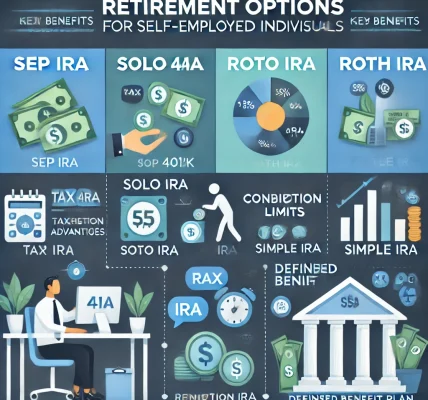Introduction
Diversification is a key strategy in investment planning, particularly when preparing for retirement. A well-diversified portfolio helps mitigate risks, ensure steady growth, and provide financial security during retirement years. However, many investors struggle to understand how to properly balance their assets across different investment vehicles. In this guide, we will explore the best ways to diversify your investment portfolio effectively, ensuring long-term financial stability for your retirement.
1. Understanding Investment Diversification
What is Diversification?
Diversification is the practice of spreading investments across different asset classes, industries, and geographic locations to reduce risk and improve returns. Instead of relying on a single investment type, a diversified portfolio includes a mix of stocks, bonds, real estate, and alternative assets.
Why is Diversification Important?
- Reduces the impact of market volatility
- Enhances long-term returns
- Protects against economic downturns
- Provides a stable income stream during retirement
2. Asset Allocation Strategies for Retirement Planning
Stocks (Equities)
- Stocks offer higher returns but come with higher risks.
- Opt for a mix of large-cap, mid-cap, and small-cap stocks for balanced growth.
- Consider investing in dividend-paying stocks to generate passive income.
Bonds (Fixed Income Investments)
- Bonds provide stability and lower risk compared to stocks.
- Government bonds, corporate bonds, and municipal bonds are ideal choices.
- Diversify bond holdings by varying maturities and interest rates.
Real Estate Investments
- Real estate offers appreciation and rental income opportunities.
- Invest in residential, commercial, or real estate investment trusts (REITs).
- Ensure a balanced real estate portfolio by selecting properties in different locations.
Mutual Funds and Exchange-Traded Funds (ETFs)
- These funds provide instant diversification by pooling investments.
- Consider index funds or actively managed mutual funds.
- ETFs offer lower expense ratios and tax efficiency.
Alternative Investments
- Diversify beyond traditional assets with commodities, precious metals, and cryptocurrencies.
- Consider investing in private equity, hedge funds, or venture capital.
- Allocate only a small portion of your portfolio to alternative investments due to higher risk.
3. Geographic Diversification
Investing in international markets reduces dependency on a single economy. Consider:
- Emerging markets for growth opportunities.
- Developed markets for stability.
- Global ETFs and mutual funds to gain exposure to various regions.
4. Retirement-Specific Investment Strategies
Risk Management Based on Age
- Younger investors can afford higher risk with more equities.
- Middle-aged investors should shift to a balanced mix of stocks and bonds.
- Retirees should focus on low-risk, income-generating investments like bonds and annuities.
Dividend and Income Investing
- Invest in high-dividend stocks and REITs for passive income.
- Consider fixed-income securities like bonds and annuities.
- Create a sustainable withdrawal strategy (e.g., the 4% rule) to ensure longevity.
Tax-Efficient Investing
- Utilize tax-advantaged retirement accounts such as 401(k)s, IRAs, and Roth IRAs.
- Invest in tax-efficient funds to minimize capital gains tax.
- Implement tax-loss harvesting strategies to offset gains.
5. Common Mistakes to Avoid When Diversifying
- Over-Diversification: Spreading investments too thin can reduce overall returns.
- Neglecting Rebalancing: Regularly review and adjust your portfolio to align with goals.
- Ignoring Inflation: Choose investments that outpace inflation to maintain purchasing power.
- Emotional Investing: Avoid making impulsive decisions based on market fluctuations.
Conclusion
A well-diversified investment portfolio is essential for a secure retirement. By strategically allocating assets across different investment types, industries, and regions, you can mitigate risks and optimize returns. Regularly reviewing and adjusting your portfolio ensures it remains aligned with your retirement goals. Start planning today to secure a financially stable and worry-free retirement.




